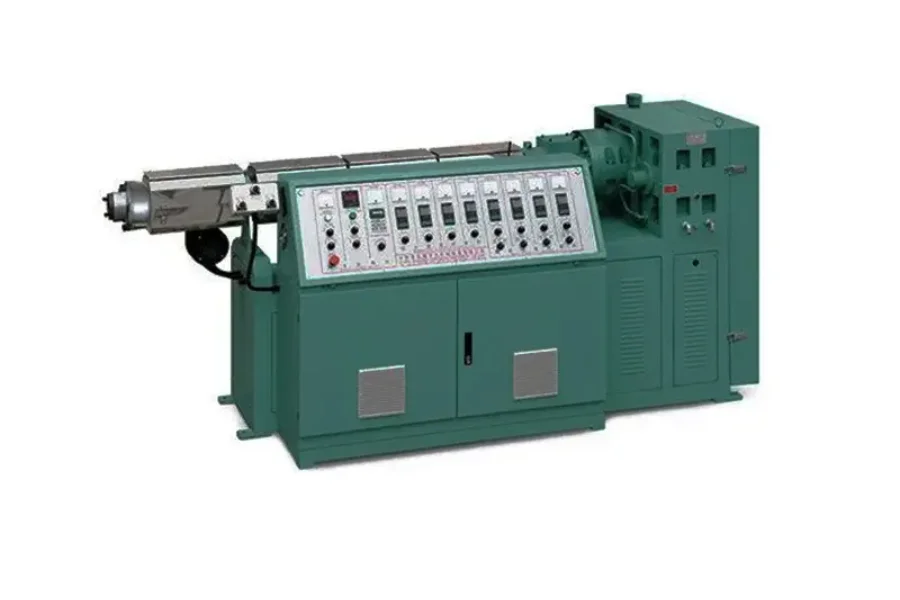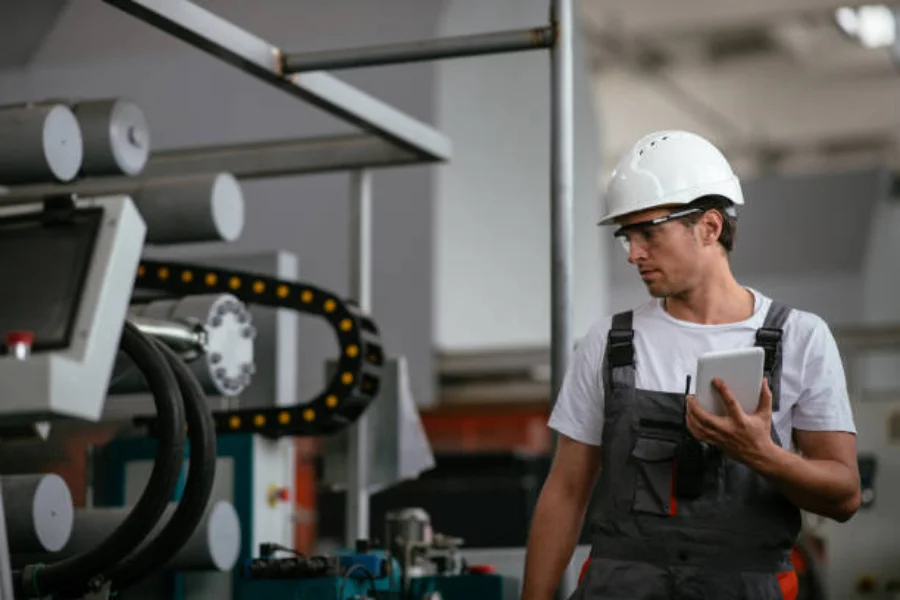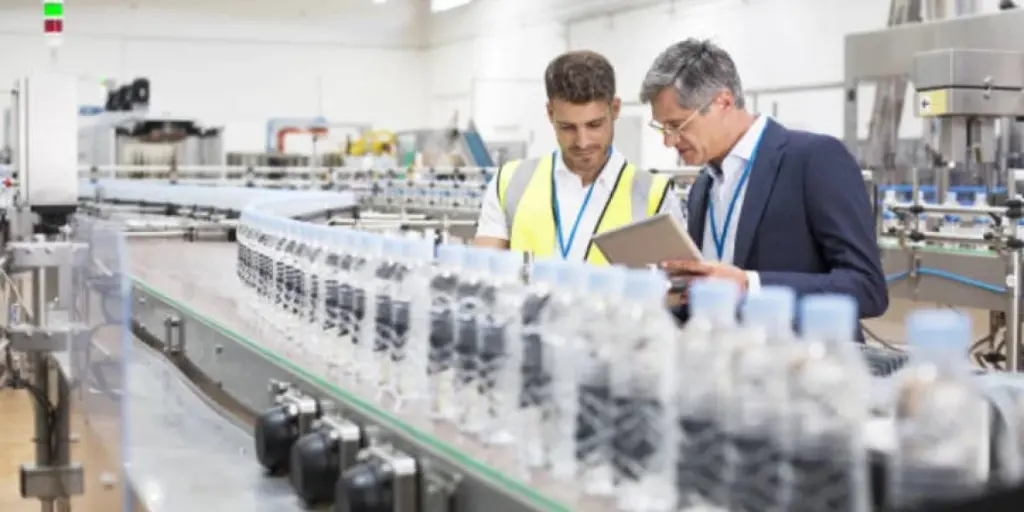The Southeast Asian region has experienced remarkable growth in recent years, owing to rapid industrialization, increasing urbanization, and population expansion. This growth has led to a subsequent surge in demand for plastic products. Major industries benefit from these products, from automotive and packaging to consumer goods and construction. The result is a steady rise in the Southeast Asia market for plastic processing machines. It is mainly driven by the region’s need for advanced technologies and an expansive manufacturing sector to meet the demand for high-quality plastic products.
This article will delve into the present market trends in plastic processing machines in Southeast Asia. The overview of the plastic machines market will be discussed while exploring the factors leading to its growth, the major players shaping the industry, and the challenges and opportunities that are expected in the future. By considering the market trends, manufacturers can benefit from the abundant opportunities in the Southeast Asian market to contribute to the region’s robust plastic processing industry.
Table of Contents
Overview of the plastics market in Southeast Asia
Special requirements of plastic machinery used in Southeast Asia
Market trends of plastic processing machines in Southeast Asia
Challenges and opportunities
Summary
Overview of the plastics market in Southeast Asia

The Southeast Asia plastic market is segmented based on product type, application, technology, and geography. It is dominated by five major players with a significant market share. These producers include Chemrez Technologies, JG Summit Petrochemicals Group, NPC Alliance Corporation, Philippine Resins Industries, and Petron Corporation.
According to Mordor Intelligence, the market for Southeast Asia plastics is anticipated to grow at a compound annual growth rate (CAGR) of over 6% during the forecast period, which goes up to 2028. The increased demand from end-user industries, such as electronics, packaging, and construction, drives this growth. Also, ecological concerns about product disposal are anticipated to slow market growth. The common trend will be innovative applications in electronic products that use biodegradable plastics that will offer different market growth opportunities.
Special requirements of plastic machinery used in Southeast Asia
Several factors influence the uniqueness and the demand for plastic machinery in the Southeast Asian region. While there are universal general requirements for plastic machinery, there are specific considerations in Southeast Asia. Below are several special requirements for plastic equipment used in Southeast Asia:
- Tropical climate resilience – because of the tropical climate with high temperature and humidity levels, plastic machines must be equipped with efficient cooling systems to minimize overheating and maintain optimal performance. Corrosion-resistant coatings and materials must be considered to reduce the effects of moisture and humidity.
- Adaptability to local climate – the diverse range of plastic materials required in manufacturing processes must handle specific properties and characteristics of locally available materials. They include variations in material melt flow, viscosity, and temperature sensitivity.
- Energy efficiency – energy costs in Southeast Asia are generally high; thus, energy-efficient machinery is needed to reduce operational expenses. The plastic machinery should have features like efficient heating and cooling systems, optimized process controls, and variable speed drives.
- Cost-effectiveness – despite the rapid industrialization in Southeast Asia, cost considerations are essential when selecting plastic machinery to balance high performance and affordability. Manufacturers should deliver value for money by providing reliable and durable machines at competitive prices.
- Ease of maintenance and service – efficient after-sales services and timely maintenance are vital factors in the plastic machinery industry in Southeast Asia. Manufacturers must produce equipment that can be easily maintained, with readily available spare parts and easily accessible service centers.
- Localization of user interfaces – various countries in Southeast Asia have diverse linguistic preferences; hence, localized user interfaces and operating manuals in relevant languages should be used. This enhances the user experience and eases operation.
Market trends of plastic processing machines in Southeast Asia

1. Energy efficiency and cost optimization
Southeast Asia manufacturers prioritize energy efficiency and cost optimization due to increasing energy costs and aim to improve overall operational efficiency. This is possible by using energy-efficient machinery and sustainable manufacturing practices. Businesses have developed cost-effective solutions to stay competitive and maximize profitability. Additionally, government incentives and regulations promote energy efficiency and sustainable industries through policies like tax benefits, subsidies, and grants for acquiring energy-efficient machinery.
2. Digitalization and smart manufacturing
As the Southeast Asia manufacturing sector continually grows, there are technological advancements, and manufacturers are adopting digital technologies. This will optimize production processes and raise overall operational efficiency. For instance, automation and robotics are being adopted due to digitalization. The Internet of Things is transforming the plastic processing machines landscape by connecting machines, data analytics platforms, and sensors that enable manufacturers to gather real-time data on equipment performance. Also, enhanced connectivity and remote machine monitoring generally improve operational efficiency.
3. Technological advancements and automation
Technological advancements and automation in the Southeast Asia manufacturing industry are expanding as they improve quality, enhance productivity, and help manufacturers gain a competitive edge. Advanced equipment has Artificial Intelligence (AI) integrations, connectivity, user-friendly interfaces and human-machine interactions. Also, green technologies offer sustainability in the plastic processing industry. All these are aimed at reducing costs and meeting the increasing market demands.
4. Customization and versatility
Versatility and customization are major market trends in Southeast Asia’s plastic processing equipment sector. Manufacturers mainly look out for machines that give quick changeovers, multifunctionality, modular design, and customizable process components as a provision for the diverse market needs. The embrace of customization and versatility will enhance competitiveness, effectively serve niche markets, and adapt to the rapidly evolving demands in the region’s ever-changing manufacturing landscape.
5. Sustainable practices and circular economy
Among the significant market trends shaping the plastic processing machines industry in Southeast Asia are sustainable practices and the circular economy. Major players in the industry are investing in energy-efficient equipment, recycling capabilities, and sustainable materials. They also strive to partner with other recycling industries that promote a sustainable and circular plastic value chain. This contributes to environmental conservation while meeting market demands.
Challenges and opportunities
1. Cost considerations and affordability of machinery
Most small and medium-sized enterprises in Southeast Asia face financial constraints when investing in advanced plastic processing equipment. As such, they should develop cost-effective strategies and use flexible financing plans to offset budgetary constraints. They should also opt for partnerships with government initiatives and financial institutions that promote machinery financing.
2. Competition from other regions and emerging markets
Southeast Asia faces competition from other regions, including China, Taiwan, and India, which have robust manufacturing industries and already established plastic processing equipment markets. The manufacturers in Southeast Asia should focus on niche markets, offer specialized services, and emphasize technological advancements. They should also develop partnerships and foster innovation to leverage the region’s proximity to major international markets.
3. Regulatory and environmental challenges in the plastic industry
The plastic sector is experiencing increased scrutiny due to environmental concerns resulting from plastic waste and pollution. These regulatory measures, like bans and compliance requirements, pose challenges for manufacturers. Nevertheless, the regulations create opportunities as manufacturers can produce environmentally friendly plastic products, venture into recycling technologies, and adopt more sustainable practices.
4. Potential growth areas and untapped markets in Southeast Asia
Southeast Asia has significant potential for plastic processing machinery market growth. This is based on the region’s manufacturing sector surge, favorable climate, and increasing consumer demand. Moreover, untapped construction, packaging, healthcare, and automotive markets will offer potential growth. Manufacturers should target the growth areas by producing tailored solutions and providing localized services.
Summary
In summary, the market trends of plastic processing machines in Southeast Asia indicate a thriving industry poised for innovation and significant growth. Generally, sustainability has proved to be a critical driver in the abovementioned industry. Together with the customization and product diversification, the market trends of plastic processing machines have been shaped to meet consumer preferences sufficiently. Additionally, to acquire high-quality plastic processing equipment, visit Alibaba.com.




